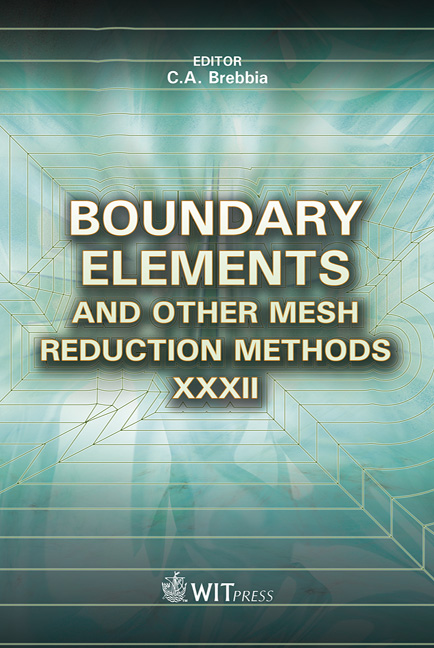Coupling The BEM/TBEM And The MFS For The Numerical Simulation Of Acoustic Wave Propagation And Transient Conduction Heat Transfer
Price
Free (open access)
Transaction
Volume
50
Pages
12
Page Range
261 - 272
Published
2010
Size
802 kb
Paper DOI
10.2495/BE100231
Copyright
WIT Press
Author(s)
A. Tadeu, J. António, N. Simões, I. Simões & I. Castro
Abstract
The coupling of the Boundary Element Method (BEM) / the Traction Boundary Element Method (TBEM) and the Method of Fundamental Solutions (MFS) is proposed for the transient analysis of acoustic wave propagation problems and conduction heat transfer, thereby overcoming the limitations posed by each method. The full domain is divided into sub-domains which are modeled using the BEM/TBEM and the MFS, and the sub-domains are coupled with the imposition of the adequate boundary conditions. The applicability of the proposed method is shown by simulating the acoustic behavior of a rigid acoustic screen in the vicinity of a dome and by simulating the thermal behavior of a solid ring incorporating a crack in its wall. Keywords: coupling BEM, TBEM and MFS, wave propagation, heat diffusion. 1 Introduction The Boundary Element Method (BEM) is one of the most suitable for modeling homogeneous unbounded systems containing irregular interfaces and inclusions since the far field conditions are automatically satisfied and only the boundaries of the interfaces and inclusions need to be discretized. Despite the fact that the BEM requires only boundary meshing it still needs prior knowledge of fundamental solutions, i.e., Green’s functions. Its efficiency also depends on the correct integration of the singular and hypersingular integrals. In addition, for a certain level of accuracy, the number of boundary elements depends on the
Keywords
coupling BEM, TBEM and MFS, wave propagation, heat diffusion





